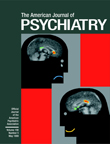In this book a series of distinguished authors review the use of neuroleptic agents to treat a variety of childhood psychiatric disorders. Published in 1996, the book is already out of date. It is part of a wider series of monographs titled Clinical Practice, whose purpose, according to series editor Judith Gold, is to provide “current, factual, and theoretical material of interest to clinicians working outside of a hospital setting” (p. xiii). Given the paucity of references focused on this subject, such a book could be invaluable for child psychiatrists. It is unclear to us, however, whether this goal is met.
One concern is the overall sense that the book is composed of a patchwork of chapters, some providing comprehensive, practical reviews of a topic but others focusing on very narrow aspects of research that may not be as appropriate in a text designed to be a practical clinical reference. Some chapters lack information relevant to current clinical practice. For example, chapter 1, “Overview of Neuroleptic Use in Child Psychiatric Disorders,” by Magda Campbell and Nilda M. Gonzalez, is a clearly written, well-organized review of neuroleptics, choices of drugs, dosage, side effects, and the disorders that merit consideration of neuroleptic therapy. Perhaps because this book was published in 1996, there is no mention of the growing and important use of the more recently marketed antipsychotics such as clozapine, risperidone, and olanzapine in childhood and adolescence and their potential role in the treatment of childhood psychiatric disorders. Although there may be few related studies of these agents in pediatric populations, the current common use of these agents—often in preference to earlier-generation neuroleptics—makes this discussion incomplete.
Although chapter 2, by Zito, Craig, and Wanderling, presents interesting data on gender considerations in the use of neuroleptics, the reader might find it difficult to synthesize the salient clinical points. Chapter 3, by the book’s editors, presents compelling research on typicality and atypicality in neuroleptic side effects, including a study that sensitizes the clinician to the vicissitudes of tardive dyskinesia and vulnerability to parkinsonism. In chapter 4, Spencer, Kafantaris, Padron-Gayol, and Rosenberg describe a study suggesting that children with schizophrenia may respond to lower doses of haloperidol than those recommended in the literature. This study was based on a very small sample, and again it is unclear how generally applicable this information is.
A similar critique would apply to chapter 5, “Cognitive Effects of Neuroleptic Treatment in Children With Conduct Disorder,” by Greenhill, Halperin, and Barmack. Most of the discussion in this chapter is dedicated to a method for assessing cognitive deficits (i.e., the Computerized Performance Test) rather than on the actual adverse cognitive effects induced by the wide variety of neuroleptics.
Chapters 6 through 9 focus on neuroleptic use in children with autism, treatment of tic disorders with neuroleptics, and neuroleptic use in Tourette’s disorder, respectively. In contrast to earlier chapters, these sections are easier to read, and their clinical relevance is more readily appreciated. “Neuroleptic-Induced Behavior Disorders in Patients With Tourette’s Syndrome,” by Ruth Dowling Bruun and Cathy L. Budman, presents useful illustrative examples on this important topic. The review on the treatment of tic disorders with neuroleptic drugs by Arthur K. Shapiro and Elaine Shapiro is well written and provides an excellent discussion of the use of neuroleptics and potential side effects.
In summary, the clinician may find selected chapters in this text to be useful sources of information but may be disappointed if attempting to use this book as a comprehensive practical clinical reference.

